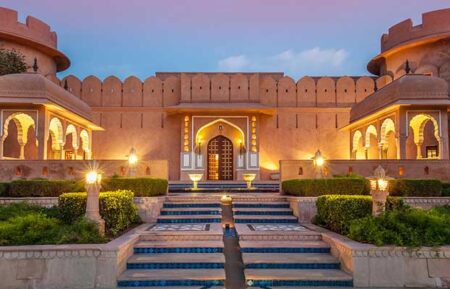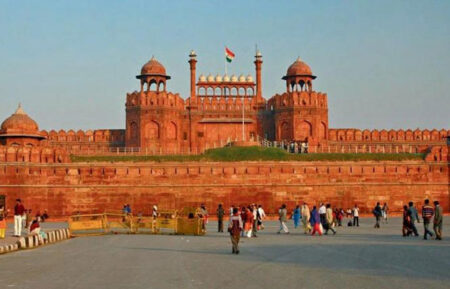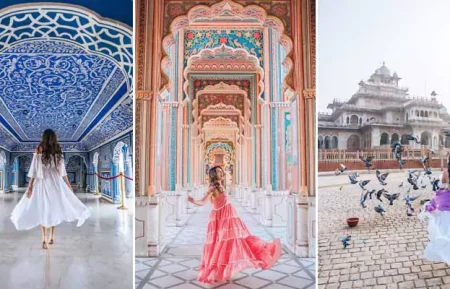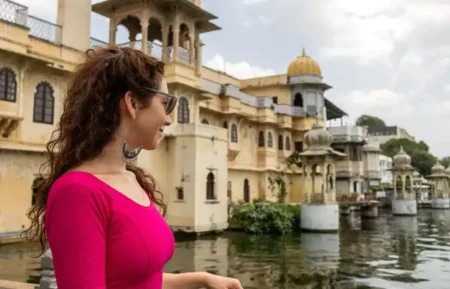Jodhpur, the enchanting “Blue City” of Rajasthan, is a treasure trove of history, culture, and architectural grandeur. Nestled in the Thar Desert, this vibrant destination is famous for its majestic forts, opulent palaces, serene lakes, and bustling markets. From the towering Mehrangarh Fort, offering panoramic views of the blue-hued skyline, to the serene Jaswant Thada, often called the Taj Mahal of Marwar, Jodhpur captivates every traveler. Explore the regal Umaid Bhawan Palace, immerse yourself in the lively Sardar Market, or take a cultural journey with a Bishnoi Village Safari. Whether you’re a history buff, nature lover, or foodie, Jodhpur’s top attractions like Toorji Ka Jhalra, Mandore Gardens, and Kaylana Lake promise an unforgettable experience. Dive into this comprehensive guide to the best places to visit in Jodhpur, complete with insider tips and a sample itinerary to plan your perfect trip to the Sun City.
Why Visit Jodhpur?
Nestled in the heart of Rajasthan, Jodhpur is the second-largest city in the state and a treasure trove of heritage and tradition. The city’s nickname, “Blue City,” comes from the iconic blue-painted houses surrounding the Mehrangarh Fort, while “Sun City” reflects its bright, sunny weather year-round. Jodhpur seamlessly blends the old with the new, offering a mix of historical landmarks, modern cafes, and vibrant local life.
From the towering Mehrangarh Fort to the tranquil Jaswant Thada, Jodhpur’s attractions are a testament to its royal past as the capital of the Marwar kingdom. The city’s rich culinary scene, colorful festivals, and warm hospitality add to its charm, making it a must-visit destination for travelers exploring Rajasthan.
In this guide, we’ll cover the top tourist attractions in Jodhpur, provide insights into their historical and cultural significance, and share practical tips for visiting each site. Let’s dive into the best places to explore in Jodhpur!
1. Mehrangarh Fort: The Crown Jewel of Jodhpur
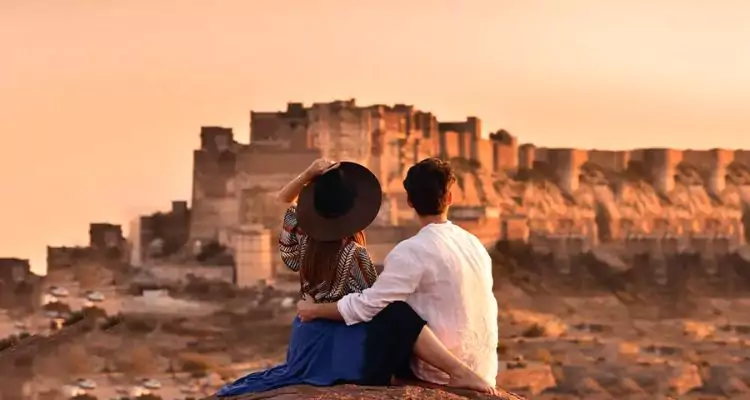
No visit to Jodhpur is complete without exploring the majestic Mehrangarh Fort, one of the largest and most well-preserved forts in India. Perched on a rocky hill at 410 feet above the city, this 15th-century fort offers panoramic views of Jodhpur’s blue skyline and is a symbol of the city’s royal heritage.
History and Significance
Founded by Rao Jodha in 1459, Mehrangarh Fort was the seat of the Rathore dynasty. The fort’s imposing structure, intricate architecture, and fascinating history make it a top attraction. Its name, derived from “Mihir” (sun) and “Garh” (fort), reflects its grandeur and strength. The fort has witnessed battles, royal ceremonies, and the evolution of Jodhpur over centuries.
Highlights
- Museum and Exhibits: The Mehrangarh Fort Museum houses an impressive collection of artifacts, including palanquins, weapons, royal costumes, and miniature paintings. The Phool Mahal (Palace of Flowers) and Sheesh Mahal (Mirror Palace) are stunning examples of Rajput architecture.
- Intricate Architecture: The fort’s seven gates, such as Jai Pol and Fateh Pol, commemorate victories and historical events. The latticework and carved panels are a treat for architecture lovers.
- Ziplining Adventure: For thrill-seekers, the fort offers a unique ziplining experience with six lines, providing breathtaking views of the fort and surrounding areas.
- Cultural Events: The fort hosts events like the Rajasthan International Folk Festival (RIFF) and World Sacred Spirit Festival, attracting music and culture enthusiasts.
Visitor Tips
- Best Time to Visit: Early morning or late afternoon to avoid the heat and enjoy pleasant weather.
- Entry Fee: ₹100 for Indian nationals, ₹600 for foreign tourists (audio guide included).
- Duration: Plan for 2–3 hours to explore the fort and museum thoroughly.
- Photography: Don’t miss capturing the blue city from the fort’s ramparts.
Why Visit? Mehrangarh Fort is not just a historical monument but a living heritage site that offers a glimpse into Rajasthan’s royal past. Its blend of history, architecture, and adventure makes it the top tourist attraction in Jodhpur.
2. Jaswant Thada: The Taj Mahal of Marwar

Located just a kilometer from Mehrangarh Fort, Jaswant Thada is a serene marble cenotaph often referred to as the “Taj Mahal of Marwar” due to its stunning white architecture. Built in 1899 in memory of Maharaja Jaswant Singh II, this architectural marvel is a peaceful retreat amidst Jodhpur’s bustling vibe.
History and Significance
Commissioned by Maharaja Sardar Singh, Jaswant Thada serves as a memorial to his father, Maharaja Jaswant Singh II. The cenotaph is a fine example of Rajput architecture, with intricate marble carvings and a tranquil setting that makes it a popular spot for visitors.
Highlights
- Marble Architecture: The cenotaph is built entirely of polished white marble, which glows under sunlight. The intricate jali (lattice) work and detailed carvings are a highlight.
- Scenic Surroundings: The monument is surrounded by lush gardens and a small lake, offering a peaceful ambiance for visitors.
- Royal Memorials: The complex houses memorials of other Marwar royals, adding to its historical significance.
- Photography Spot: The view of Mehrangarh Fort from Jaswant Thada is a favorite among photographers.
Visitor Tips
- Best Time to Visit: Morning for cooler weather and soft light for photography.
- Entry Fee: ₹30 for Indian nationals, ₹50 for foreign tourists.
- Duration: 1–1.5 hours is sufficient to explore the cenotaph and gardens.
- Combine with Mehrangarh: Visit Jaswant Thada after exploring Mehrangarh Fort, as they’re close by.
Why Visit? Jaswant Thada’s tranquil beauty and architectural elegance make it a must-visit for those seeking a quieter, reflective experience in Jodhpur.
3. Umaid Bhawan Palace: A Blend of Royalty and Luxury
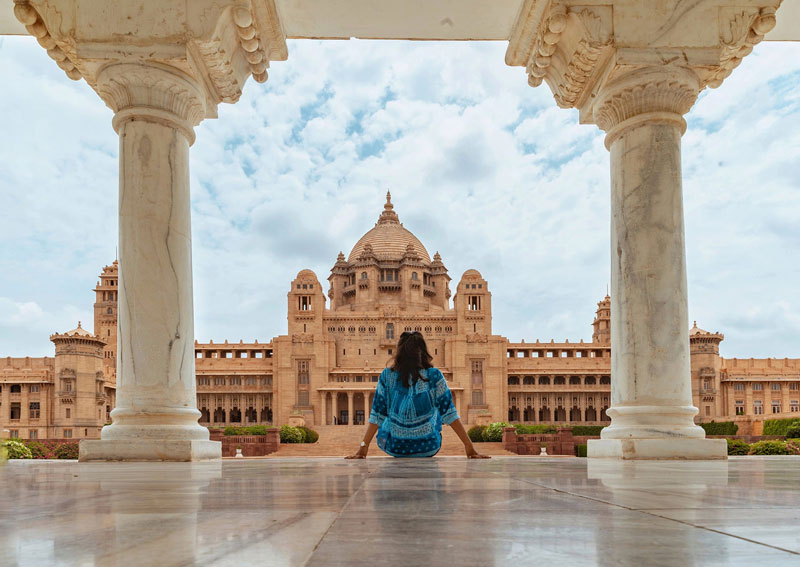
Umaid Bhawan Palace is one of the world’s largest private residences and a living testament to Jodhpur’s royal legacy. Built between 1929 and 1943 by Maharaja Umaid Singh, this magnificent palace is a blend of Indian and Art Deco architecture. Part of the palace is a luxury hotel managed by Taj Hotels, while another section houses a museum and the royal residence.
History and Significance
Constructed during a famine to provide employment to locals, Umaid Bhawan Palace is a symbol of compassion and grandeur. The palace’s construction employed thousands of workers, showcasing the Maharaja’s commitment to his people.
Highlights
- Umaid Bhawan Museum: The museum displays royal artifacts, vintage cars, clocks, and photographs, offering insights into the lives of Jodhpur’s royalty.
- Architecture: The palace’s golden-yellow sandstone façade, sprawling gardens, and opulent interiors are a visual delight.
- Luxury Hotel: The Taj Umaid Bhawan Palace is a bucket-list stay for luxury travelers, with world-class amenities and royal hospitality.
- Vintage Car Collection: Car enthusiasts will love the display of classic cars owned by the royal family.
Visitor Tips
- Best Time to Visit: Late afternoon to enjoy the museum and sunset views.
- Entry Fee: ₹30 for Indian nationals, ₹100 for foreign tourists (museum entry).
- Duration: 1–2 hours for the museum and palace grounds.
- Dress Code: Dress modestly, especially if visiting the museum or public areas of the palace.
Why Visit? Umaid Bhawan Palace offers a unique blend of history, luxury, and architectural brilliance, making it one of Jodhpur’s top attractions.
4. Mandore Gardens: A Historical Oasis
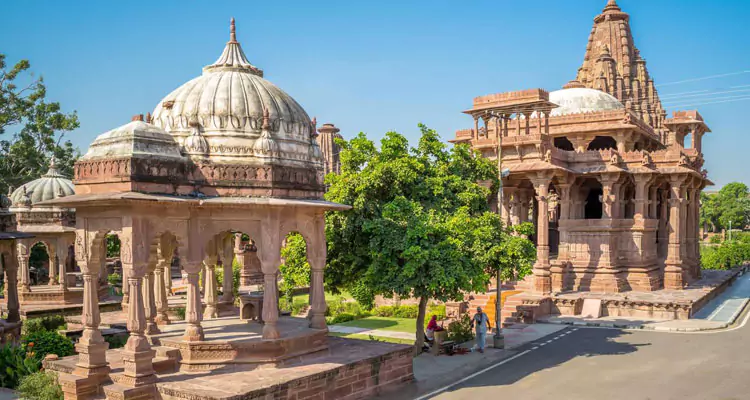
Located 9 km from Jodhpur’s city center, Mandore Gardens is a historical site featuring ancient temples, cenotaphs, and lush gardens. Once the capital of the Marwar kingdom, Mandore is a lesser-known gem that offers a peaceful escape from the city’s hustle.
History and Significance
Mandore was the capital of the Rathore dynasty before Jodhpur was founded. The gardens house memorials of Marwar rulers, ancient temples, and ruins that tell the story of the region’s past.
Highlights
- Cenotaphs of Marwar Rulers: The red sandstone cenotaphs, or “devals,” are architectural marvels with intricate carvings.
- Hall of Heroes: This rock-cut gallery features statues of local heroes and deities, showcasing Rajput valor and mythology.
- Mandore Fort Ruins: Explore the remnants of the ancient fort for a glimpse into Mandore’s history.
- Gardens and Monkeys: The lush gardens are home to playful monkeys, adding a fun element for visitors.
Visitor Tips
- Best Time to Visit: Early morning or late afternoon for pleasant weather.
- Entry Fee: Free entry, though donations are appreciated for maintenance.
- Duration: 1–2 hours to explore the gardens and cenotaphs.
- Caution: Be cautious of monkeys and avoid carrying food items.
Why Visit? Mandore Gardens is perfect for history lovers and those seeking a quiet, offbeat attraction in Jodhpur.
5. Rao Jodha Desert Rock Park: A Nature Lover’s Paradise
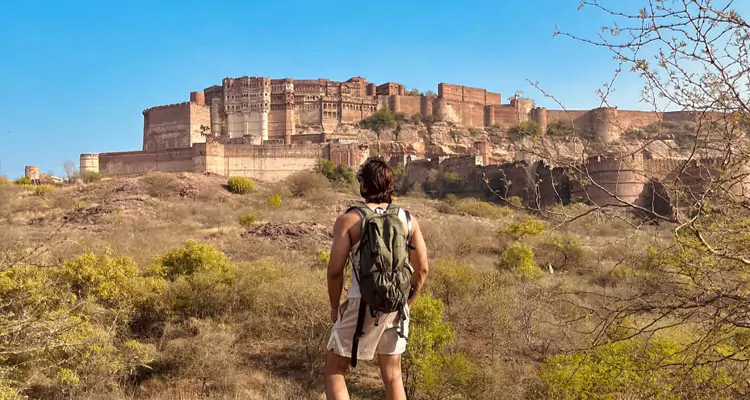
Spread over 72 hectares near Mehrangarh Fort, the Rao Jodha Desert Rock Park is a unique ecological restoration project showcasing the arid landscapes of the Thar Desert. Established in 2006, the park is home to native desert flora and fauna, making it a haven for nature enthusiasts.
History and Significance
Created to restore the ecological balance around Mehrangarh Fort, the park was developed by the Mehrangarh Museum Trust. It showcases the resilience of desert ecosystems and promotes sustainable tourism.
Highlights
- Desert Flora: The park features over 80 species of native plants, including cacti, succulents, and desert shrubs.
- Walking Trails: Explore well-marked trails with informative signboards about the region’s ecology.
- Birdwatching: The park is a great spot for birdwatching, with species like the Indian eagle-owl and black-shouldered kite.
- Photography: The rocky terrain and fort views make it a paradise for photographers.
Visitor Tips
- Best Time to Visit: Winter months (October–March) for comfortable weather.
- Entry Fee: ₹100 for adults, free for children under 10.
- Duration: 1–2 hours for a leisurely walk.
- Essentials: Wear comfortable shoes, carry water, and use sunscreen.
Why Visit? Rao Jodha Desert Rock Park offers a unique blend of nature, ecology, and stunning views, making it a must-visit for eco-conscious travelers.
6. Clock Tower and Sardar Market: The Heart of Jodhpur
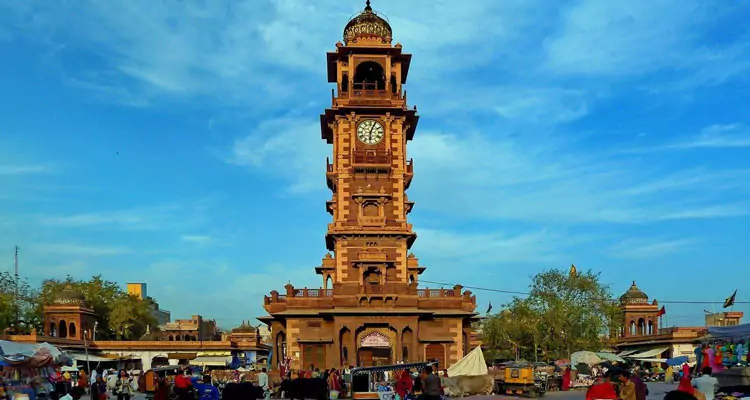
The Clock Tower (Ghanta Ghar) and Sardar Market form the bustling heart of Jodhpur, offering a vibrant mix of shopping, street food, and local culture. Located in the old city, this area is perfect for experiencing Jodhpur’s lively atmosphere.
History and Significance
The Clock Tower was built by Maharaja Sardar Singh in the 19th century, giving the market its name. Sardar Market is one of Jodhpur’s oldest bazaars, known for its handicrafts, spices, and textiles.
Highlights
- Shopping: Browse for bandhani textiles, leather goods, jewelry, and Rajasthani handicrafts.
- Street Food: Savor local delicacies like mirchi vada, kachori, and Jodhpur’s famous makhaniya lassi.
- Cultural Vibe: The narrow lanes and colorful shops reflect Jodhpur’s traditional charm.
- Photography: The vibrant market and Clock Tower are perfect for capturing Jodhpur’s essence.
Visitor Tips
- Best Time to Visit: Evening for a lively atmosphere and cooler weather.
- Entry Fee: Free.
- Duration: 1–2 hours for shopping and dining.
- Bargaining: Bargain politely to get the best deals on souvenirs.
Why Visit? Sardar Market and the Clock Tower offer an authentic taste of Jodhpur’s local life, making it a must-visit for shoppers and foodies.
7. Toorji Ka Jhalra: Jodhpur’s Iconic Stepwell
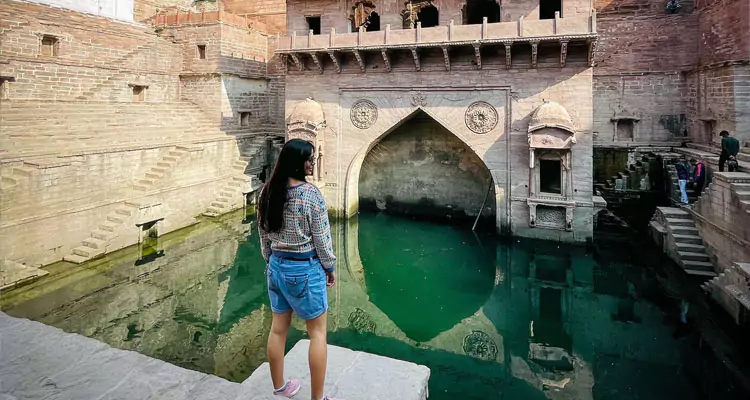
Toorji Ka Jhalra, a beautifully restored 18th-century stepwell, is one of Jodhpur’s hidden gems. Located near Sardar Market, this architectural marvel is a testament to Rajasthan’s traditional water conservation systems.
History and Significance
Built in 1740 by Queen Toorji, the stepwell was a vital water source for the city. Its intricate carvings and symmetrical design make it a popular spot for history and architecture enthusiasts.
Highlights
- Architecture: The stepwell’s red sandstone steps and intricate carvings are a photographer’s delight.
- Restoration: Recent restoration efforts have revived its beauty, making it a popular tourist spot.
- Nearby Cafes: The area around Toorji Ka Jhalra is home to trendy cafes like Stepwell Cafe, perfect for a relaxing break.
Visitor Tips
- Best Time to Visit: Morning or evening for pleasant weather and great lighting.
- Entry Fee: Free.
- Duration: 30–45 minutes to explore the stepwell and nearby areas.
- Caution: Be careful while climbing the steps, as they can be steep.
Why Visit? Toorji Ka Jhalra is a blend of history, architecture, and Instagram-worthy aesthetics, making it a must-visit attraction in Jodhpur.
8. Balsamand Lake: A Serene Retreat
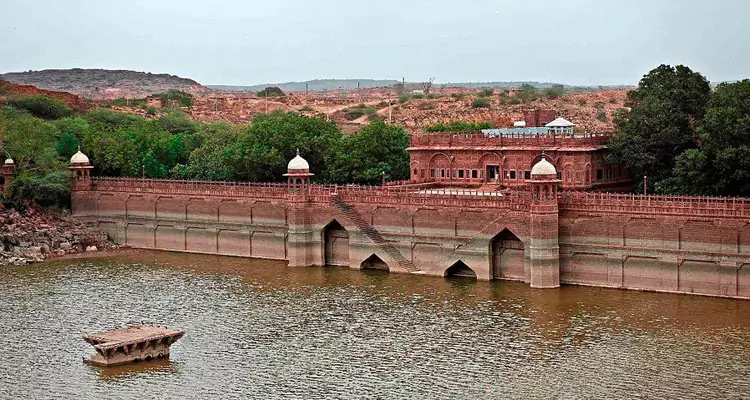
Located 5 km from Jodhpur, Balsamand Lake is a man-made lake surrounded by lush gardens and a historic palace. Built in 1159 AD, this serene spot is perfect for those seeking tranquility away from the city.
History and Significance
Constructed by Balak Rao Parihar, Balsamand Lake was originally a water reservoir for the city. The adjacent Balsamand Palace, now a heritage hotel, adds to its charm.
Highlights
- Scenic Beauty: The lake’s calm waters and surrounding greenery make it ideal for picnics and relaxation.
- Balsamand Palace: The red sandstone palace offers a glimpse into royal life and is open for dining or stays.
- Birdwatching: The lake attracts migratory birds, making it a hotspot for birdwatchers.
Visitor Tips
- Best Time to Visit: Winter months for pleasant weather.
- Entry Fee: Free for the lake; palace access may require dining or accommodation.
- Duration: 1–2 hours for a relaxing visit.
- Essentials: Carry water and snacks for a picnic by the lake.
Why Visit? Balsamand Lake is a peaceful escape for nature lovers and those looking to unwind in Jodhpur.
9. Bishnoi Village Safari: A Cultural Experience
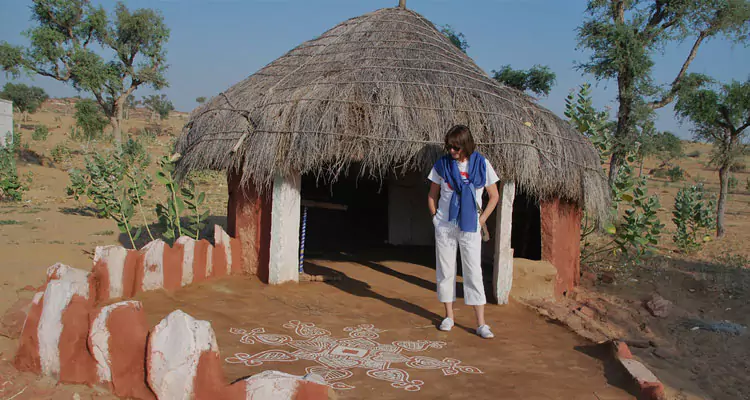
For a deeper dive into Rajasthan’s rural life, a Bishnoi Village Safari is a must-do. The Bishnoi community is known for its eco-friendly lifestyle and reverence for nature, making this safari a unique cultural experience.
History and Significance
The Bishnoi community, founded by Guru Jambheshwar in the 15th century, is known for its conservation efforts, including protecting wildlife like the blackbuck. The safari offers a glimpse into their sustainable way of life.
Highlights
- Village Tour: Visit traditional Bishnoi homes, interact with locals, and learn about their customs.
- Wildlife Spotting: Spot blackbucks, chinkaras, and migratory birds in the surrounding areas.
- Handicrafts and Pottery: Witness artisans at work and purchase handmade souvenirs.
- Cultural Performances: Some tours include folk music and dance performances.
Visitor Tips
- Best Time to Visit: October–March for comfortable weather.
- Booking: Book through a reputable tour operator for an authentic experience.
- Duration: Half-day or full-day tour, depending on the itinerary.
- Respect Local Customs: Dress modestly and respect the community’s eco-friendly practices.
Why Visit? The Bishnoi Village Safari offers a unique blend of culture, wildlife, and sustainability, making it a memorable addition to your Jodhpur trip.
10. Kaylana Lake: A Picturesque Escape
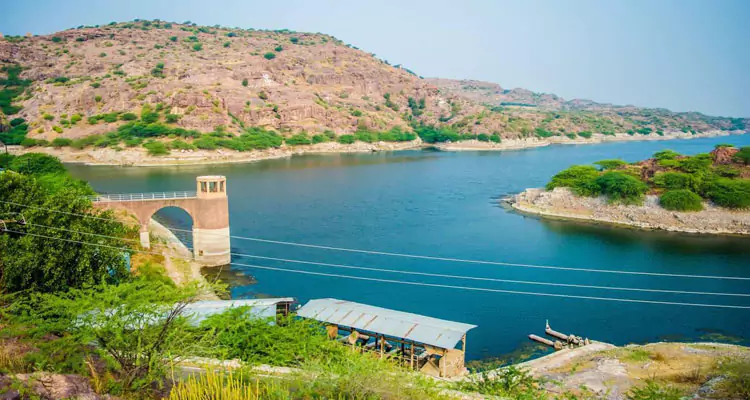
Kaylana Lake, located 8 km from Jodhpur, is another scenic spot perfect for nature lovers and photographers. This artificial lake, surrounded by hills and greenery, is a popular spot for picnics and sunset views.
History and Significance
Built in 1872 by Pratap Singh, Kaylana Lake was created to provide water to the city. Today, it’s a popular recreational spot for locals and tourists alike.
Highlights
- Sunset Views: The lake is a stunning spot to watch the sunset over the water.
- Boating: Enjoy boating on the lake for a relaxing experience.
- Birdwatching: Spot migratory birds like flamingos and pelicans during winter.
- Photography: The lake’s serene backdrop is perfect for capturing Jodhpur’s natural beauty.
Visitor Tips
- Best Time to Visit: Evening for sunset views and cooler weather.
- Entry Fee: Free; boating charges apply.
- Duration: 1–2 hours for a leisurely visit.
- Essentials: Carry sunscreen and water for daytime visits.
Why Visit? Kaylana Lake offers a refreshing break from Jodhpur’s historical sites, perfect for a relaxing evening.
11. Chamunda Mata Temple: A Spiritual Haven
Located within the Mehrangarh Fort complex, the Chamunda Mata Temple is a revered spiritual site dedicated to Goddess Chamunda, the kuldevi (family deity) of the Rathore dynasty. The temple attracts devotees and tourists alike for its serene ambiance and historical significance.
History and Significance
Built by Rao Jodha in 1460, the temple was established to honor Goddess Chamunda, believed to protect the royal family and the city. It remains an active place of worship.
Highlights
- Spiritual Significance: The temple is a sacred spot for locals and devotees of Goddess Chamunda.
- Architecture: The temple’s simple yet elegant design complements the fort’s grandeur.
- Festivals: Navratri is a vibrant time to visit, with special prayers and celebrations.
Visitor Tips
- Best Time to Visit: Morning for a peaceful visit.
- Entry Fee: Included in Mehrangarh Fort entry.
- Duration: 30–45 minutes.
- Respect Customs: Dress modestly and remove shoes before entering.
Why Visit? Chamunda Mata Temple offers a spiritual experience and a glimpse into Jodhpur’s religious heritage.
Practical Tips for Visiting Jodhpur
To make the most of your trip to Jodhpur, here are some practical tips:
Festivals: Plan your visit during Marwar Festival (October) or Diwali for a cultural experience.
Best Time to Visit In Jodhpur: October to March is ideal, with pleasant weather (15°C–30°C). Avoid summer (April–June) due to extreme heat.
How to Reach Jodhpur:
- By Air: Jodhpur Airport is well-connected to major Indian cities like Delhi, Mumbai, and Jaipur.
- By Train: Jodhpur Railway Station connects to cities across India, with trains like the Mandore Express.
- By Road: National highways connect Jodhpur to Jaipur (330 km), Udaipur (250 km), and other cities.
Getting Around: Auto-rickshaws, cabs, and rented scooters are convenient for exploring the city.
Where to Stay in Jodhpur:
- Luxury: Umaid Bhawan Palace (Taj), RAAS Jodhpur.
- Mid-Range: The Fern Residency, Pal Haveli.
- Budget: Zostel Jodhpur, Moustache Hostel.
What to Eat In Jodhpur: Try local dishes like dal bati churma, gatte ki sabzi, and mawa kachori. Don’t miss the makhaniya lassi at Sardar Market.



